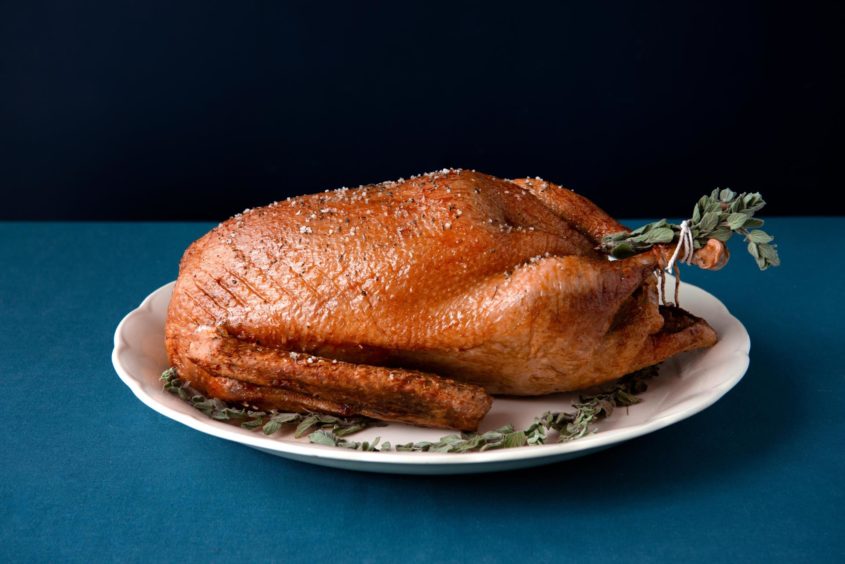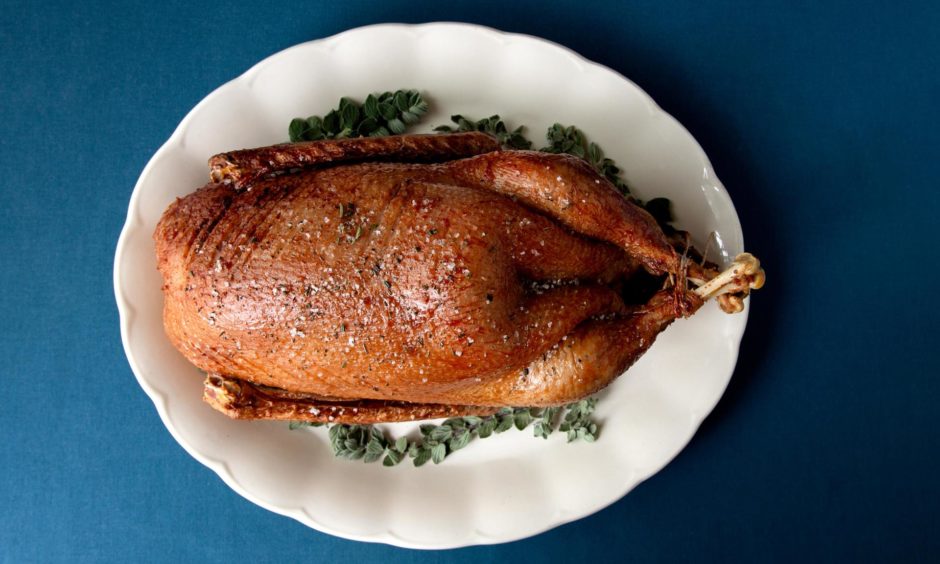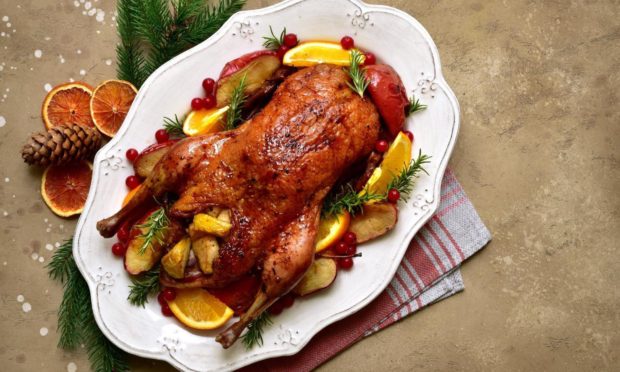If you’re new to the goose cooking game or want to see how the pros do it, take a look at this handy guide for roasting your own on Christmas Day.
There is no doubt that 2020 has been the year of trying new things, especially when it comes to food – and we expect Christmas to be no exception.
Though many of us will opt for traditional turkey for our dinner this year, there may be some who want to push the boat out a little more and try a new meat for a change, such as goose.
In comparison to last year, award-winning butcher Farmison & Co have seen a 200% increase in their goose crown sales this year, as well as a 100% rise in free-range goose sales, meaning there’s a chance it could be appearing on a dinner table near you this Christmas.

Generally, geese have very little meat on them so aren’t the best for entertaining the masses on Christmas Day – which is why 2020 may be the perfect time to give it a go if you haven’t done already.
Executive development chef at Farmison & Co, Jeff Baker has some golden tips on how to get the best out of a Christmas goose.
Jeff’s top tips
- When defrosting your goose for Christmas, you must ensure that you do this in the fridge and not near a radiator or in contact with direct heat.
- Make sure you remove all of the giblets and lobes of fat prior to roasting your goose.
- Be mindful of your oven space: apply the finishing touches to the rest of your meal whilst allowing your bird to rest up for an hour after cooking – be as productive as possible and attend to your vegetables and gravy too.
- Baste the goose frequently whilst roasting, as basting will keep the breast meat nice and moist, whilst also intensifying the flavour.
- Be sure to pair your goose with accompaniments that will naturally enhance the flavour of the bird: we would advise fruity flavours.
How to prepare a goose

- To start, remove the two large lobes of fat at the opening of the cavity if that has not already been done. Simply remove with your hands and reserve – this fat adds great flavour to a variety of meats when roasting or it can be rendered down for frying .
- To render, slowly melt then simmer the fat over a low heat; then cool, strain and keep in the fridge for up to three months following Christmas.
Remember to remove the giblets from the cavity; often they’re in a plastic bag, this must be removed before roasting. - The giblets can make great stock for Christmas gravy, or they can be poached in the goose fat until tender and rich – this creates a confit before frying over high heat. Why not serve this as an extra condiment on toast with chopped parsley and garlic?
- Your goose has a deep layer of fat under the skin which will need to be released when roasting. To achieve this, simply pierce the skin all over using a toothpick concentrating on the area between the breast and legs.
- To achieve crisp fat, I recommend starting the day before roasting. Scald the bird over a sink on a wire rack with 2 or 3 kettles of boiling water slowly poured over the bird, pat dry and leave uncovered in the fridge overnight.
- Roast the goose on a trivet of vegetables or a wire rack in the roasting tin, so that the goose doesn’t boil and overcook in its own fat. The trivet makes a superb base for gravy to serve alongside your Christmas dinner.
How to roast the goose
- On the day of roasting, massage with fine sea salt and a little oil and bring to room temperature.
- Preheat your oven to 160°C for a fan assisted oven or 180°C for ovens without a fan (gas 4).
- Place the goose breast side up on a trivet of chopped onion, carrot and apples, in a large and heavy-based roasting tray: one with deep sides and handles for easy movement.
- Place the tray in the centre of the oven and roast for 20 minutes per 500g basting the goose with its own fat as it roasts.
- To finish, increase the oven to 210°C for fan assisted or 230°C for ovens without a fan (gas 8) and roast for an additional 15 minutes until the skin is golden brown and crisp.
- The core temperature should read a minimum of 65°C before resting.
- Remove from the oven, drain away excess fat reserving for another use, and place the goose onto a clean tray and keep warm by covering with a sheet of foil.
- Rest for a minimum of 30 minutes before carving.
- There’s nothing left to do but tuck in!










